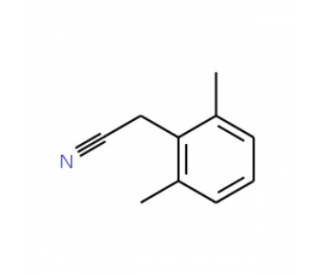详细说明
Purity
>85%, by SDS-PAGE under reducing conditions and visualized by Colloidal Coomassie® Blue stain
Activity
Recombinant Human His6-USP9x-2 is a Ubiquitin-specific deconjugating enzyme. Reaction conditions will need to be optimized for each specific application. We recommend an initial Recombinant Human His6-USP9x-2 concentration of 0.05-0.5 μM.
Source
Spodoptera frugiperda, Sf 21 (baculovirus)-derived Contains an N-terminal Met and 6-His tag
Accession #
Predicted Molecular Mass
291 kDa
E-552 |
| |
Formulation X mg/ml (X μM) in 50 mM HEPES pH 7.5, 100 mM NaCl, 10% Glycerol (v/v), 5 mM DTT | ||
Shipping The product is shipped with dry ice or equivalent. Upon receipt, store it immediately at the temperature recommended below. | ||
Stability & Storage: Use a manual defrost freezer and avoid repeated freeze-thaw cycles.
|
Background: USP9x
Ubiquitin Specific Peptidase 9, X-linked (USP9x), also known as DFFRX, FAF, and FAM, is a cytoplasmic protein that belongs to the peptidase C19 family of deubiquitinating enzymes (1,2). It is 2570 amino acids (aa) in length with a predicted molecular weight of 292.3 kDa. Human USP9x shares 98% aa sequence identity with the mouse and rat orthologs. USP9x contains a catalytic domain located between aa 1531 and 1971 and a Ubiquitin-like domain that is located at aa 873-963 (3). It is widely expressed and has been shown to interact with and deubiquitinate multiple substrates. Some putative targets include beta -Catenin, TOR, Synuclein-alpha, the Ubiquitin ligases (E3s) Itch, MARCH7, and SMURF1, and the MAP kinase kinase kinase ASK1 (4-10). USP9x has also been shown to control the activity of the AMPK-related kinases ARK5 and MARK4 through direct removal of Lys29- and Lys33-linked Ubiquitin chains (3). It has also been shown to promote cell survival by deubiquitinating and stabilizing the anti-apoptotic protein Mcl-1, and to regulate chromosome alignment and segregation during mitosis by deubiquitinating the chromosome passenger protein Survivin (11-13). Additionally, USP9x appears to promote TGF-beta signaling via deubiquitination of mono-ubiquitinated Smad4 (14). USP9x expression has been shown to be correlated with several cancer types (11,15,16). This recombinant human protein contains an N-terminal His 6-tag.
References:
Jones, M.H. et al. (1996) Hum. Mol. Genet. 5:1695.
Wood, S.A. et al. (1997) Mech. Dev. 63:29.
Al-Hakim, A.K. et al. (2008) Biochem. J. 411:249.
Murray, R.Z. et al. (2004) Mol. Biol. Cell 15:1591.
Mouchantaf, R. et al. (2006) J. Biol. Chem. 281:38738.
Nathan, J.A. et al. (2008) Traffic 9:1130.
Nagai, H. et al. (2009) Mol. Cell 36:805.
Rott, R. et al. (2011) Proc. Natl. Acad. Sci. USA 108:18666.
Agrawal, P. et al. (2012) J. Biol. Chem. 287:21164.
Xie, Y. et al. (2013) J. Biol. Chem. 288:2976.
Schwickart, M. et al. (2010) Nature 463:103.
Trivigno, D. et al. (2012) Neoplasia 14:893.
Vong, Q.P. et al. (2005) Science 310:1499.
Dupont, S. et al. (2009) Cell 136:123.
Pérez-Mancera, P.A. et al. (2012) Nature 486:266.
Peddaboina, C. et al. (2012) BMC Cancer 12:541.
Long Name:
Ubiquitin-specific Protease 9, X-linked
Entrez Gene IDs:
8239 (Human); 22284 (Mouse); 363445 (Rat)
Alternate Names:
Deubiquitinating enzyme FAF-X; DFFRX; DFFRXubiquitin specific protease 9, X-linked (fat facets-like, Drosophila); Drosophila fat facets related, X-linked; EC 3.1.2.15; EC 3.4.19.12; FAF; FAM; Fat facets in mammals; fat facets protein related, X-linked; Fat facets protein-related, X-linked; hFAM; probable ubiquitin carboxyl-terminal hydrolase FAF-X; ubiquitin specific peptidase 9, X-linked (fat facets-like, Drosophila); ubiquitin specific peptidase 9, X-linked; ubiquitin thioesterase FAF-X; Ubiquitin thiolesterase FAF-X; ubiquitin-specific processing protease FAF-X; Ubiquitin-specific protease 9, X chromosome; Ubiquitin-specific-processing protease FAF-X; USP9; USP9x; X chromosome (fat facets-like Drosophila)











 粤公网安备44196802000105号
粤公网安备44196802000105号